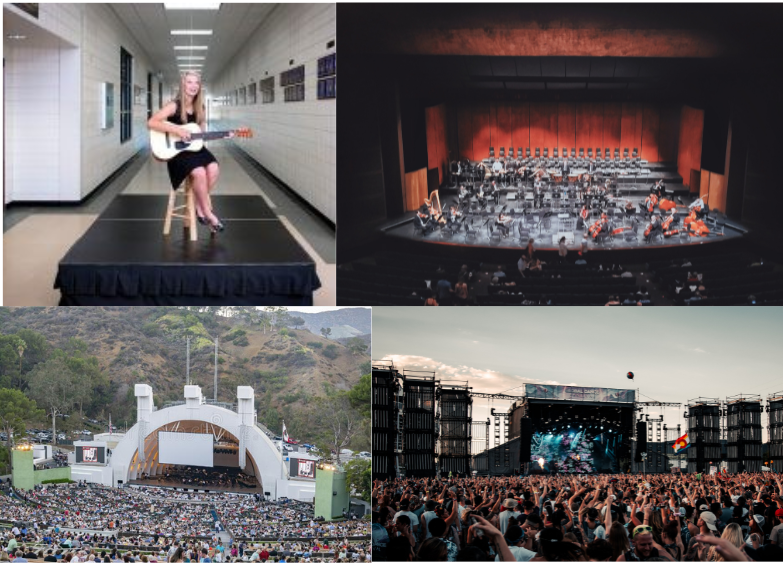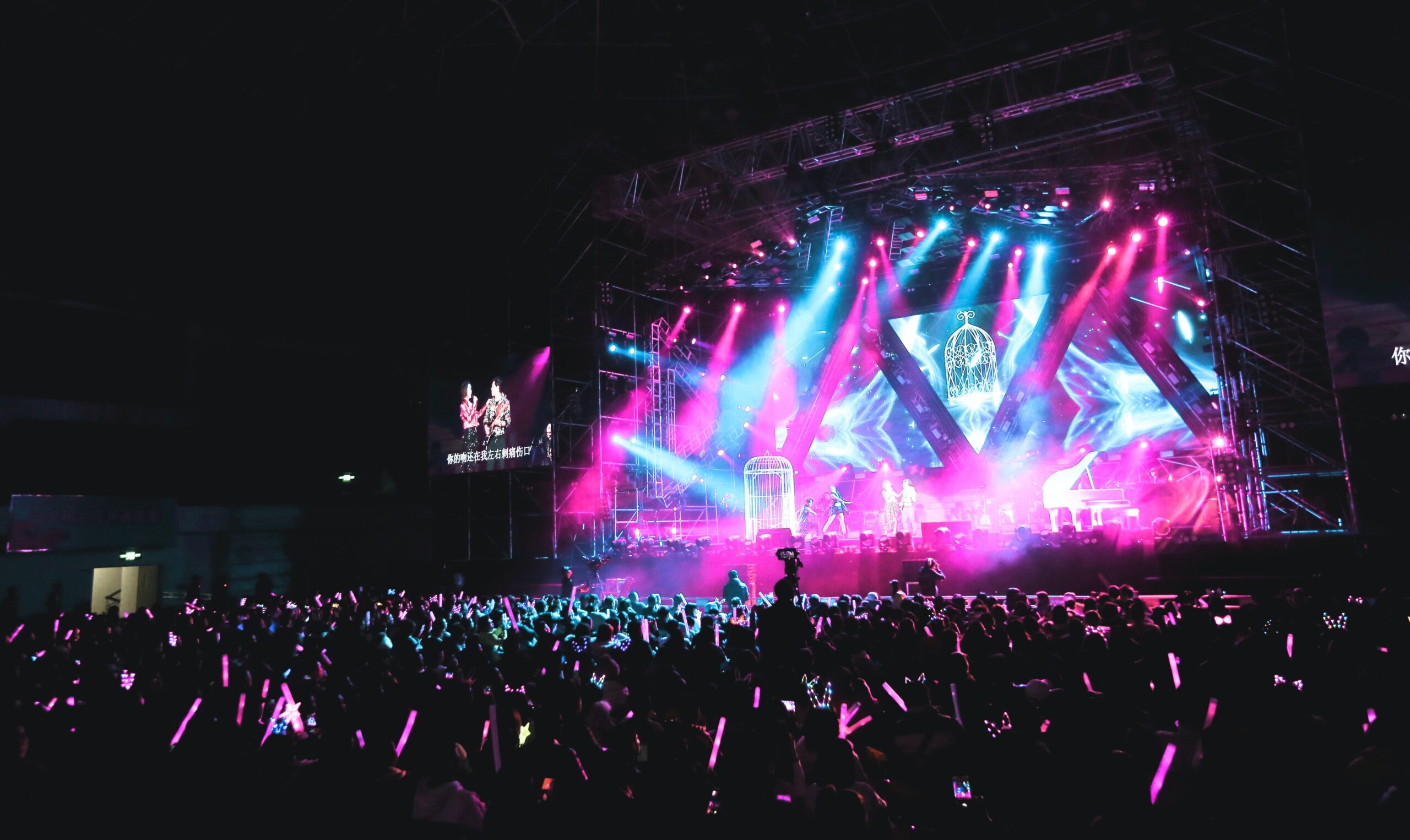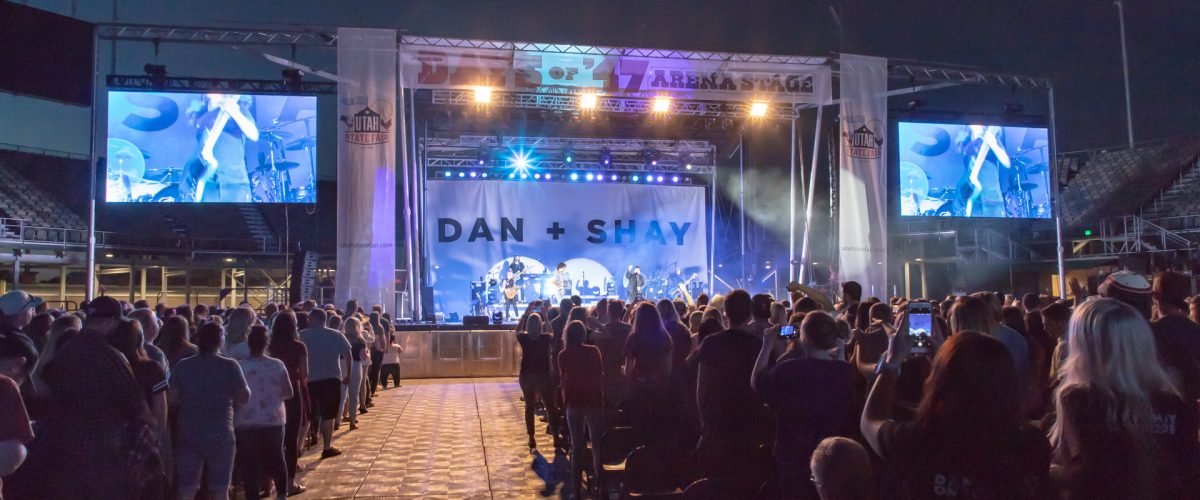Unsure about choosing the right stage for your next event? That’s understandable because stages come in all sizes and configurations. From a simple riser stage for one person to a large performance hall stage to accommodate a 120-piece orchestra. Stages serve several functions including
-
-
- Focusing the audience on the presentation
- Making it easier to see the presenter or performance
- Setting the mood with stage elements
- Providing a place for sound and lighting focus
- Offering a space to set up equipment, cabling, etc. away from the audience
-

While there is more to the decision in selecting a stage than its area, it is the most fundamental part of the decision process. Size does matter. A stage must be able to accommodate the largest performance that will take place on it during events. That means that even if 99 out of 100 performances need a small stage and 1 out of 100 performances require a larger stage, in a fixed stage environment, you will need to go with the larger stage. With advance planning during initial stage design, you might be able to devise a way to add additional space to it for that 1 in-100 performance.
Smaller venues need all the space they can to hold paying patrons. That means the stage they use will be sized to fit the kind of entertainment that draws people to their club. That also means that the stage size will also be a limiting factor in the entertainment they can book at their establishment.
Smaller venues usually have a stage size large enough to have room for a 6 or 5-piece band. Venue operators and their talent buyers understand that they cannot book entertainment that exceeds their stage’s ability to accommodate the act.
Three Factors to Consider in Choosing the Right Stage for Events
Factor One: The Stage Must Be Large Enough for Performers
Every performer or performing group has a minimum stage size requirement for their performance. The space they need depends on the number of people in the act, the instruments they use, and how much they move about during their performance. Highly animated performers will require a larger stage for their antics.
It’s possible to compute a theoretical stage area needed by using guidelines for the area needed by certain instruments for musical groups.
- Vocalists: 10 sq. ft. for each backup vocalist and 30 to 50 sq. ft. for lead vocalist. If they move a lot you should add additional space for each vocalist. Showbands should have a technical rider and stage plot to specify the space they need to perform.
- Acoustic Instruments: 10 to 15 sq ft per musician as part of an orchestra, e.g., strings, woodwinds, bass, etc. If the main artists are using acoustic instruments, then adequate space should be provided to recognize the importance of their performance. Think of these entertainers as more of lead vocalists using an acoustic instrument and provide a minimum of 50 sq. ft. per entertainer.
- Electric Instruments: For musicians using an electric guitar, bass, or keyboard, approximately 30 sq. ft. of space is needed, including amplifiers and equipment.
- Drums: Drum sets require 50 to 70 sq. ft. of space for all of the drums and cymbals used. Drummers are typically elevated on an 8 ft. by 8 ft. riser to be more easily seen because they are behind other band members.
- Grand Piano: Allow 100s sq. ft. when this type of piano is used and 30 sq. ft. for an upright piano or keyboard.
Using these guidelines, you can approximate the space you need for a performance. Other factors come into play in addition to the square footage needed. For example, since the drummer is on an eight ft. riser and is behind the band, then the stage needs to have enough space in front of the drummer to allow the other band members to have adequate space. Eight feet in front of the drummer is usually the minimum most bands seek. The stage depth requirement is 16 ft to provide the space needed.
Besides the drum riser discussed above, many larger acts such as dance groups, big bands, orchestras, etc. require tiered riser sections on the stage for different sections of performers or musical instruments. Risers have fixed dimensions so the more risers you need, the larger the stage area required. Stage acoustics are important as well with large groups of musicians since the distances between musicians and the people and equipment that get in the way of the sound create delays.
Factor Two: The Stage Size Must Fit the Space and Audience

Besides the area of a stage, there are other dimensions to be considered as well. You need to consider the width, depth, and height of the stage as well as the stage ceiling or truss height.
How large is your audience? Will they be standing or seated? Is the audience in a flat area, e.g., floor or field, or in a sloped area such as found in a theater, amphitheater, or arena? You need to consider both audience sight lines as well as sound dispersion so the entire audience can enjoy the experience. The further back your audience is from the stage as well as its size and how dense it is will determine the stage height needed as well as the height of the PA speakers. A higher stage is needed in those circumstances. You can read more about the sound issues involved in concert production here: 4 Key Audio Specs for Outdoor Concert and Festival Production.
Factor Three: The Wow Factor in Stage Design

The main elements you will use for your stage design are:
- Lighting schemes
- Furniture
- AV equipment
- Set backdrops, décor, and props
Think of the stage as a blank canvas for your event. Be creative and think outside the box while using the basic concepts of production design. Know your audience and design your stage with them in mind. For more ideas on stage design, you can go here.
As you go about your stage designing process, try to use the space you have in creative ways. Good lighting can transform a plain space into a new atmosphere full of energy and excitement. Make sure your sound system is well tuned to the venue and audience, without the audience needing to strain to hear the speaker or performers and without the annoying sound of microphone feedback.
You can use technology to enhance your stage design as well. Digital banners, LED walls, fog machines, and other technology can help set the mood you desire. Use visually striking backdrops as well as furniture and other props to create an immersive event for your audience. A well-designed stage enriches the venue’s overall look while providing a platform to optimize the experience for both performers and audience members.
Conclusion
The event stage should be big enough and set up in a way to accommodate the performers and the audience. It should be large enough to allow the audience to see the performers, but not so large that it is difficult to see the performers from the back of the room. Enhance the experience with a stage design that reinforces the mood you want and creates a memorable experience for those attending the event.




